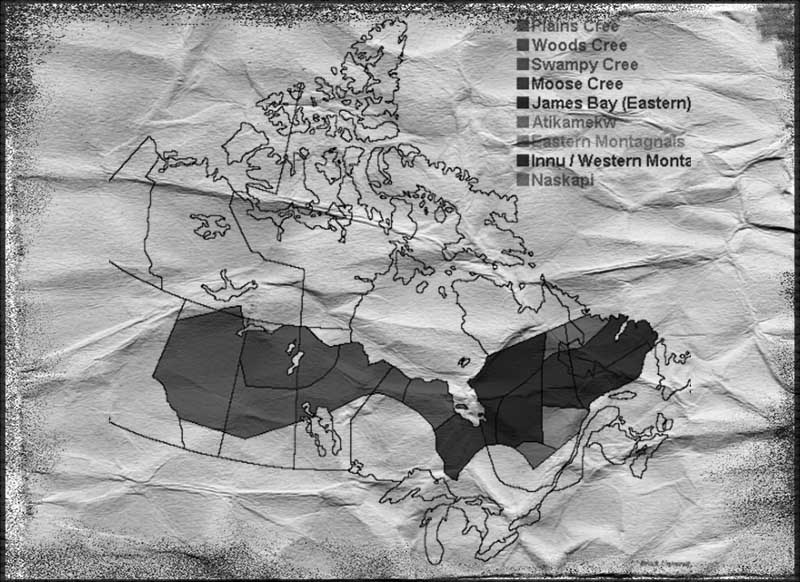
Woodland Cree Culture and Language
Woodland Cree is one of the largest indigenous groups living in the northern part of Alberta. Those who call themselves “nîhithaw” speak a language that is part of the Algonquian family. Their traditional occupations were fishing, hunting for animals and birds, as well as collecting wild plants.
This page contains all the most important facts about the culture of the Woods Cree and their language, which is almost extinct.
Woodland Cree Culture
Back at the time when Canada was colonized by the British and French, there were two main sub-groups of the Cree people. Both were traditional American subarctic tribes.
In terms of primary occupations, the Woodland or Woods Cree hunted animals and birds, fished, and gathered wild plants and berries. Due to their region’s scarcity of larger animals, they ate mostly hares and rabbits. In rare cases, they were able to bring home prey in the form of a beaver, elk or bear. Due to the difficult situation and the disappearance of some animal populations, from time to time, the settlements suffered from hunger. It was especially difficult to survive the winter.
There has always been a clear division between men and women. Men, as a rule, hunted, defended settlements, made canoes, hunting tools, sleds and weapons. Women took care of the household: they caught rabbits, collected food and plants, chopped firewood, tanned skins, wove fishing nets, and also sewed clothes for everyone in the tribe.
The social organization of this Cree subgroup was based on related families. The largest groups united among themselves to wage war against other tribes. The Woods Cree feared sorcery and all who practiced it. However, they greatly respected the various customs and prohibitions associated with animal spirits. In the cultural and spiritual life of the Woods Cree people, shamans had tremendous power.
Where Did the Woodland Cree Live?
Until the 18th century, the Woods Cree’s territory extended west from Hudson Bay, north to Churchill. At this time, the tribes in the western part of Northern Saskatchewan and Manitoba acted as intermediaries in trade with the tribes and peoples of the west. The Woodland Cree managed to significantly expand their territories by exchanging goods for weapons. As a result, other settlements were forced to move further north and west.
Depending on the region of residence, their lodges differed in the materials from which they were made. In more southerly regions, the tribes lived in birch bark wigwams. Settlements in the north used pine branches and deer skins to build housing.

Woodland Cree Language
In Canada, Cree is spoken by some people living in the territories from Labrador to western British Columbia. This language has several main dialects:

Plains Cree;

Swampy Cree;

Woodland or Woods Cree;

James Bay or Eastern Cree;

Moose Cree;

Attikamek;

Montagnais;

Naskapi.
The Woodland Cree language is a critically endangered variety of the Cree dialects. Residents southwest of the city of Churchill speak it, north of Manitoba towards Saskatchewan. This dialect’s main feature is a non-palatalized th.
The word “Cree” itself comes from a short form of the Ojibwe word “kistanovak,” which means “people of the north,” and the Jesuit word “cristina.”
In 1840, missionary and linguist James Evans developed his own Cree syllabic writing system. The use of this system increased greatly over the last few decades of the 19th century. Thanks to this, even the Bible was translated into the Cree language.
As for Cree dictionaries, you can count them on your fingers. There is no information about the existence of the Woodland Cree dictionary.
